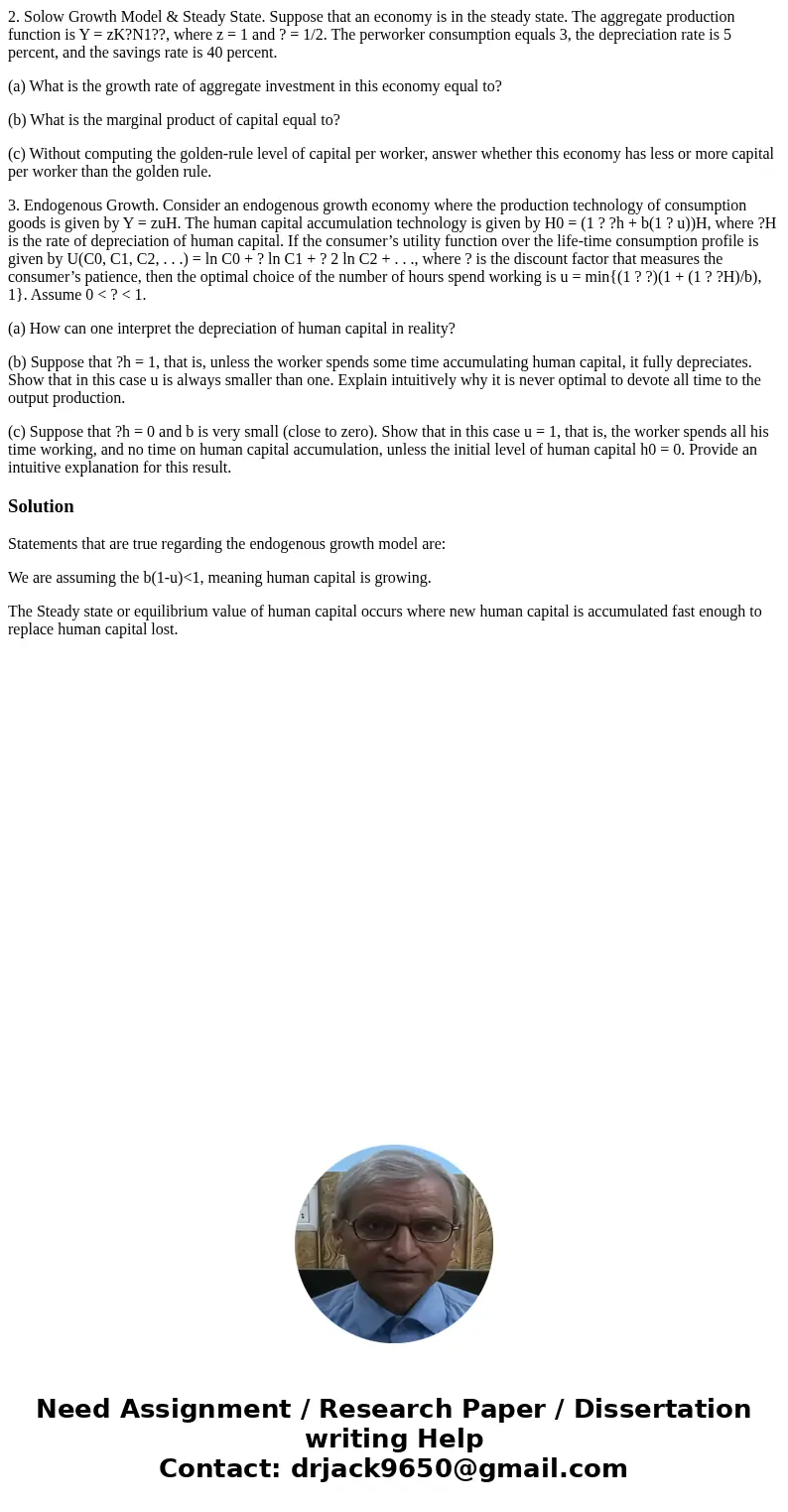2 Solow Growth Model Steady State Suppose that an economy i
2. Solow Growth Model & Steady State. Suppose that an economy is in the steady state. The aggregate production function is Y = zK?N1??, where z = 1 and ? = 1/2. The perworker consumption equals 3, the depreciation rate is 5 percent, and the savings rate is 40 percent.
(a) What is the growth rate of aggregate investment in this economy equal to?
(b) What is the marginal product of capital equal to?
(c) Without computing the golden-rule level of capital per worker, answer whether this economy has less or more capital per worker than the golden rule.
3. Endogenous Growth. Consider an endogenous growth economy where the production technology of consumption goods is given by Y = zuH. The human capital accumulation technology is given by H0 = (1 ? ?h + b(1 ? u))H, where ?H is the rate of depreciation of human capital. If the consumer’s utility function over the life-time consumption profile is given by U(C0, C1, C2, . . .) = ln C0 + ? ln C1 + ? 2 ln C2 + . . ., where ? is the discount factor that measures the consumer’s patience, then the optimal choice of the number of hours spend working is u = min{(1 ? ?)(1 + (1 ? ?H)/b), 1}. Assume 0 < ? < 1.
(a) How can one interpret the depreciation of human capital in reality?
(b) Suppose that ?h = 1, that is, unless the worker spends some time accumulating human capital, it fully depreciates. Show that in this case u is always smaller than one. Explain intuitively why it is never optimal to devote all time to the output production.
(c) Suppose that ?h = 0 and b is very small (close to zero). Show that in this case u = 1, that is, the worker spends all his time working, and no time on human capital accumulation, unless the initial level of human capital h0 = 0. Provide an intuitive explanation for this result.
Solution
Statements that are true regarding the endogenous growth model are:
We are assuming the b(1-u)<1, meaning human capital is growing.
The Steady state or equilibrium value of human capital occurs where new human capital is accumulated fast enough to replace human capital lost.

 Homework Sourse
Homework Sourse